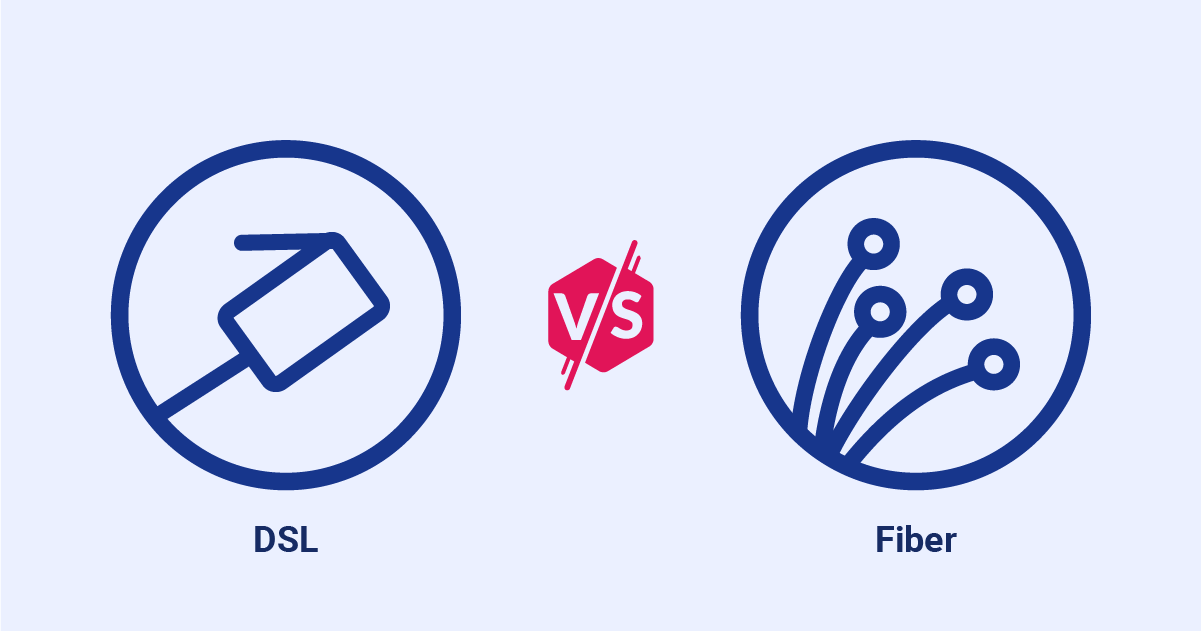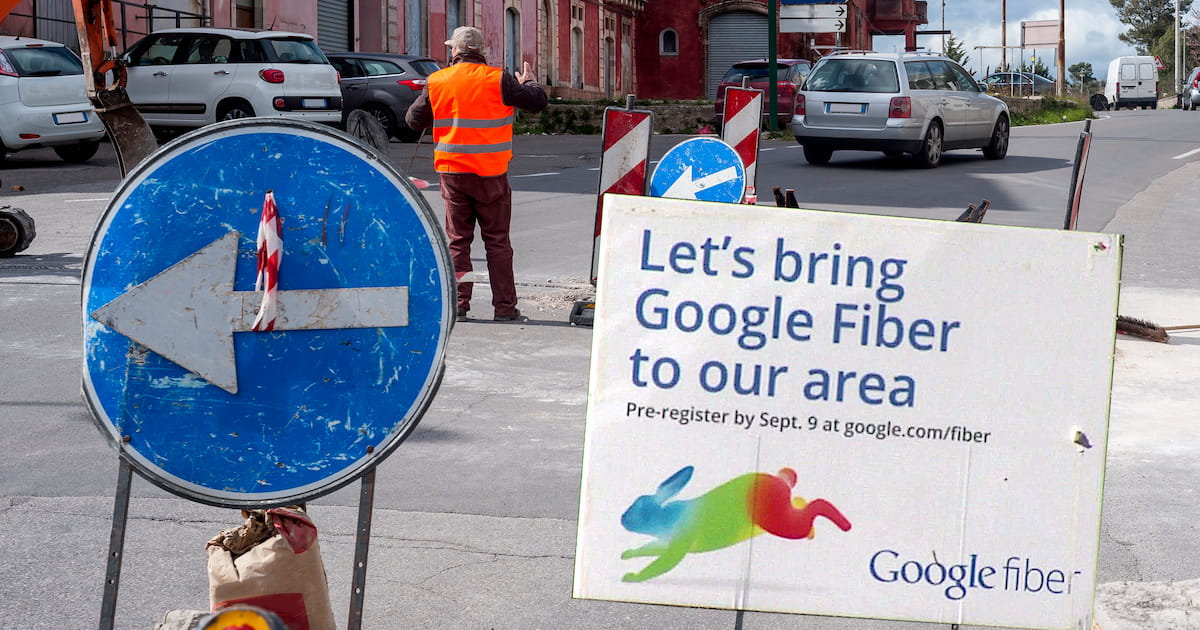Does weather impact internet connection speeds?
Sep 18, 2023 | Share
FAQ
Weather can negatively impact your internet connection in several ways, depending on what type of connection you have, including causing slower speeds and total outages.
Most of us have had to deal with interruptions to our utilities from weather. Whether it’s a power outage from a lightning strike or a water interruption after a flood, it’s never fun. Having your Wi-Fi network go out can be a big problem, especially if you work from home, so let’s take a closer look at how weather can affect your internet.
Need a more reliable internet provider? See what other internet options are available in your area. In the meantime, check out our internet connection troubleshooting guide to find out how to get back online.
How weather impacts different connections
| Connection | Common Weather Problems |
|---|---|
| DSL |
|
| Fiber |
|
| Cable |
|
| Wi-Fi |
|
| 4G |
|
| Fixed Wireless |
|
| 5G |
|
| Satellite |
|
Wireless connections, even very fast ones, are the most impacted by the weather. Weather phenomena like rain and snow can directly interfere with wireless signals. Wired connections are pretty resilient to bad weather, though power outages are a problem for all connection types. Satellite signals travel the farthest through the atmosphere and require outdoor equipment, making them especially vulnerable to weather problems.
The internet was built to be incredibly resilient. This means that even if weather events physically damage cables, antennas, or other infrastructure, any interruptions to service are usually limited in size and the damage can be quickly repaired or bypassed. If you experience disruptions in your internet service for more than just a few hours, you should contact your internet service provider.
Pro Tip:
If you’re dealing with unexplained issues with your internet connection, a good place to start is our handy troubleshooting guides.
Storms and your internet
By far the most common and direct way that weather impacts our internet connections is when storms cause local power outages.
When there’s a power outage in your area, it not only shuts down the equipment in your house, but also knocks out other important internet infrastructure near your house. This means that even if you had a generator to power your computer and home network, you probably still couldn’t connect to the internet.
One exception to this is DSL internet, which transmits its signal over copper phone lines. Those of us who remember (or still have) landline telephones know that even if the power went out, the phone still worked.
This also means that as long as you have a battery to keep your router and computer running, DSL internet can continue to run without electricity, just like a landline phone.1
Rain and your internet
In addition to contributing to power outages, rain can interfere with wireless internet connections in a phenomenon known as rain fade.2
Liquid water has a broad absorption spectrum in microwave wavelengths (which is how microwave ovens work).3 Most satellite, fixed-wireless, Wi-Fi, and 5G signals fall into these frequencies, which means that if there’s rain or clouds between the transmitter and your receiver, some of the signal will be absorbed. Water droplets can also scatter the signal if the frequency of the signal and the size of the droplets match up in the right way.
Rain fade poses a considerable challenge for the deployment of new technologies like millimeter-wave 5G in tropical areas. Fortunately, new countermeasures are also being developed to mitigate these effects on wireless signals.4
Snow, ice, and your internet
Cold weather can affect internet connections in several ways. Snow and ice particles in the air can contribute to rain fade, but they also pose an additional problem for wireless internet since snow can build up on antennas. This is particularly problematic for satellite internet customers, as a satellite dish is a great shape for catching large amounts of snow.
If snow builds up on your dish, you need to remove it. If your dish is easily accessible, this can be done with your hand or a brush. If not, the safest way to do this is by standing on the ground or another flat, stable surface and gently brushing the snow off with a broom or other long-handled tool.
If you live in an area where snow buildup is a consistent problem, it’s better to prevent it with a cover or heater for your dish.
High winds and your internet
High velocity winds can damage infrastructure and cause power outages. But for satellite internet users, they can also knock your dish out of alignment.
If you suspect that your satellite dish is out of alignment, the first thing you should do is contact your provider’s customer support. They will either walk you through steps to fix the problem or send a technician out to help fix things.
Extreme heat and your internet
Electronic equipment like routers and computers need to stay cool in order to function properly, so extreme temperatures can cause these devices to overheat and interrupt home Wi-Fi network.
For indoor equipment, overheating can usually be avoided by moving your router to a cooler location. Keep network equipment out of direct sunlight and make sure that it’s in a well-ventilated area, not in a small closet or cupboard. Also make sure you choose a spot for your router where you will still maintain a strong Wi-Fi signal.
For outdoor equipment, there’s often not much you can do. One Starlink customer in Arizona discovered that its satellite internet equipment goes into thermal shutdown if it reaches a temperature of 122° F.5 The customer was able to temporarily cool the dish off with a sprinkler, but this was only a temporary solution.
Processors and other electronic components found on printed circuit boards can be easily damaged by heat. Most devices, like the Starlink dish, will shut down before their electronics can be damaged by heat. But when in doubt, it’s a good idea to shut down your equipment if it’s getting too hot.
Hurricanes and your internet
Even if you live far from areas that are prone to hurricanes, these superstorms can still cause problems for your online experience. In 2012, Hurricane Sandy struck the New England coastline, knocking out power and internet infrastructure, causing outages throughout New York and New Jersey.
People on the other side of the country didn’t have to worry about outages, but might have found that a number of websites like Huffington Post, Buzzfeed, and Gizmodo were no longer online. Although the decentralized nature of the internet means that information can easily be rerouted to avoid damaged areas—even damaged areas as big as the one caused by Hurricane Sandy—this doesn’t help if all your data centers are in the affected area.6
Data centers that host important parts of the internet always have backup generators and other measures to ensure operation, even in the event of a natural disaster. Unfortunately, huge weather events like hurricanes can cause more damage than can be repaired before the fuel runs out. In this way, hurricanes can affect internet users across the globe.
Good weather and your internet
Surely a day with clear sunny skies is the one time we don’t have to worry about the weather ruining our internet connection, right? Well, for most of us, yes. But once again, satellite internet is the exception. For a few days each spring and fall (if you’re in the Northern Hemisphere), the satellite you connect to will line up perfectly with the sun, creating interference.7
Interestingly, low-Earth orbit (LEO) satellite constellations like Starlink don’t suffer from this issue. Traditional satellite internet uses geostationary satellites that stay in the same position in the sky. You point your dish directly at that one satellite. LEO constellations are made up of many smaller satellites that are constantly moving across the sky, which means that there’s never a time of year where they line up perfectly with the sun.
Does your current internet connection experience too many outages? See which other providers offer service in your area.
Troubleshooting weather outages
In most cases, weather-related outages are outside your control. They most often involve damage to power or network infrastructure that impacts most or all of the people living in your area. Still, there are a few things you can do just to be sure.
Check for outages
It’s pretty obvious when the internet’s out due to a blackout in your area (since your lights won’t work), but sometimes the damage impacting your connection is a bit farther away. If the lights are on but the internet’s still not working, check to see if there is an outage by calling your provider or checking a website like Down Detector on your phone.
Check for damage to your equipment
If there’s not a reported outage in your area, look outside near your house for damage to equipment on your property. This is most common for satellite customers, whose dishes can be knocked out of alignment by strong winds. But even wired customers can have their connections cut if a branch falls on a cable running from a nearby utility pole.
Never approach a fallen cable, even if you assume it’s not an electrical line. Call your local utility provider or your internet service provider (ISP) if you spot damage to cables or utility poles near your home. A misaligned satellite can often be adjusted if it’s easily accessible, but any damaged equipment should be reported to your ISP as soon as possible.
Check for other problems
If there are no outages in your area and no obvious damage to equipment near your home, your internet problems might have a much simpler solution, like resetting your Wi-Fi router. Follow our handy guide to troubleshooting internet connection problems to see if you can get your connection up and running again.
Sources
- Jon Brodkin, Ars Technica, “How Verizon Lets Its Copper Network Decay to Force Phone Customers onto Fiber,” August 14, 2014. Accessed November 4, 2021.
- Satoms, “What Is VSAT Satellite Link Rain Fade?” October 17, 2017. Accessed November 4, 2021.
- Udo Kaatze, Ralph Behrends, and Reinhard Pottel, “Hydrogen Network Fluctuations and Dielectric Spectrometry of Liquids,” Journal of Non-Crystalline Solids. July, 2002. Accessed November 4, 2021.
- Kesavan Ulaganathen, Tharek Adbul Rahman, Md. Rafiqul Islam, and Norun Abdul Malek, “Mitigation Technique for Rain Fade Using Frequency Diversity Method,” 2015 IEEE 12th Malaysia International Conference on Communications (MICC). November 2015. Accessed November 4, 2021.
- Jon Brodkin, Ars Technica, “Starlink Dishes Go into “Thermal Shutdown” Once They Hit 122° Fahrenheit,” June 15, 2021. Accessed November 4, 2021.
- Jon Brodkin, Ars Technica, “Hurricane Sandy Takes Data Centers Offline with Flooding, Power Outages,” October 30, 2012. Accessed November 4, 2021.
- Shaw Broadcast Services, “Sun Transit,” Accessed November 4, 2021.
Author - Peter Christiansen
Peter Christiansen writes about satellite internet, rural connectivity, livestreaming, and parental controls for HighSpeedInternet.com. Peter holds a PhD in communication from the University of Utah and has been working in tech for over 15 years as a computer programmer, game developer, filmmaker, and writer. His writing has been praised by outlets like Wired, Digital Humanities Now, and the New Statesman.
Editor - Cara Haynes
Cara Haynes has been editing and writing in the digital space for seven years, and she's edited all things internet for HighSpeedInternet.com for five years. She graduated with a BA in English and a minor in editing from Brigham Young University. When she's not editing, she makes tech accessible through her freelance writing for brands like Pluralsight. She believes no one should feel lost in internet land and that a good internet connection significantly extends your life span.





